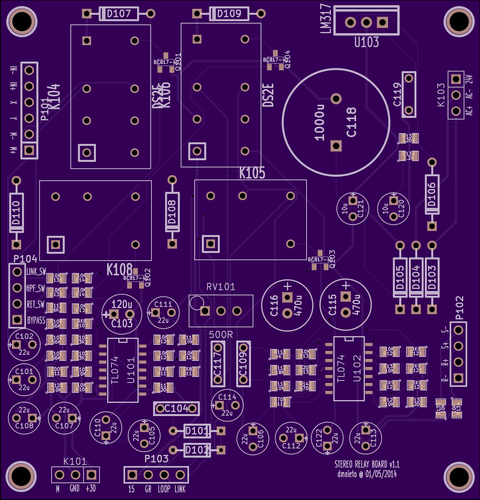dmnieto
Well-known member
I have a question concerning my board....
While I understand that switching in a .22uF capacitor instead of C27 will increase the attack time to 8ms, I wonder what would be the effect on the release times... Will it be increased as well? Has anybody done an approximate analysis of the time constants in the circuit? Because I would like to increase the attack time without affecting the release too much.
While I understand that switching in a .22uF capacitor instead of C27 will increase the attack time to 8ms, I wonder what would be the effect on the release times... Will it be increased as well? Has anybody done an approximate analysis of the time constants in the circuit? Because I would like to increase the attack time without affecting the release too much.





































